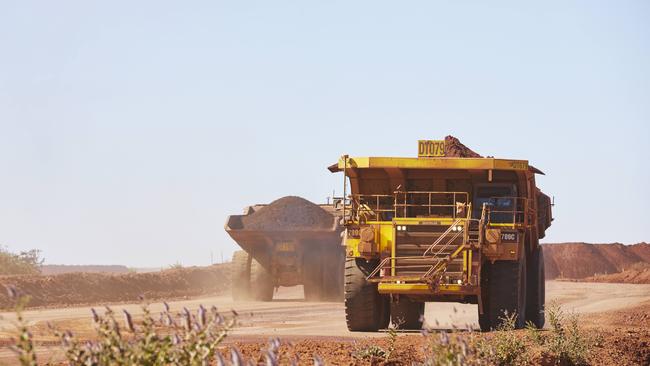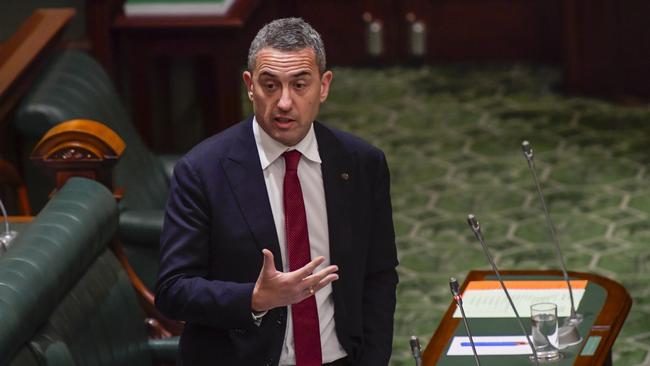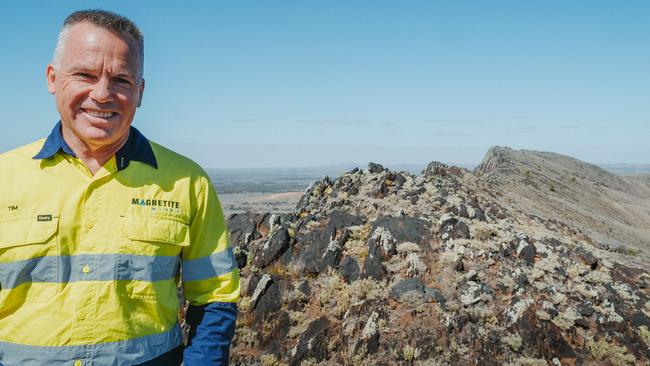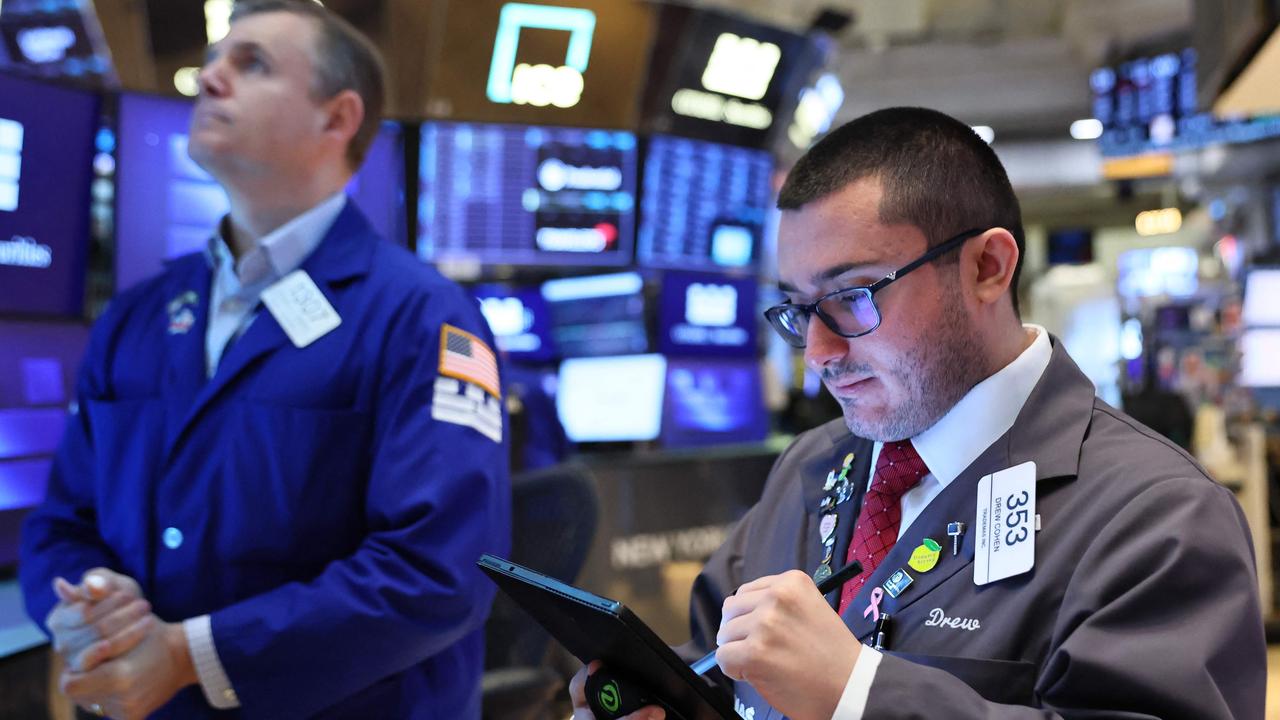Opportunity knocks on road to green iron exports
Australia has the potential to create an enormous new export industry that will thrive in a carbon-constrained world, advocates of so-called green iron say.

Business
Don't miss out on the headlines from Business. Followed categories will be added to My News.
Australia has the potential to create an enormous new export industry that will thrive in a carbon-constrained world, advocates of so-called green iron say, with the burgeoning hydrogen industry and ample renewable energy the key.
Governments at the state and federal level are also taking the opportunity seriously, with the South Australian government this week releasing a Green Iron and Steel Strategy, including a tangible action plan, and the federal government calling for submissions on the path forward for a green metals industry.
The proposal being advanced in the iron ore sector, laid out in simple terms, is straightforward: rather than exporting iron ore itself, Australia can use its vast reserves of magnetite iron ore, which can be turned into direct reduced iron (DRI), to produce a value-added iron product for export, or a product that can be processed further into steel locally.
The DRI process can be achieved by using carbon from coal or natural gas, or hydrogen.
Given the nation’s ambitious hydrogen plans, and a growing realisation that exporting hydrogen as a compressed gas is unlikely to be viable, the ability to use hydrogen produced from renewable energy to produce iron will enable manufacturers to produce a low-carbon product expected to be in great demand globally.
Swedish start-up GreenIron in April received environmental approval to construct what is claimed to be the first green iron furnace of its type, with the company aiming to use hydrogen produced with renewable energy to turn metalliferous inputs into green iron.
That plant is expected to be operational within a year.

In SA this week, Energy and Mining Minister Tom Koutsantonis released the new green iron strategy, which includes actions such as delivering a commercial derisking study, in partnership with industry, “that will determine specialised industrial precincts with supporting value chain and infrastructure planning, to derisk the green iron investment opportunity and establish plans for developing a DRI plant’’.
And while SA is home to the Whyalla steel mill, which has its own DRI plans and sits adjacent to the site of the government’s planned $593m hydrogen hub, government and industry believe there is the opportunity for more than one DRI operation, producing a decarbonised iron feedstock for the global steel sector.
The industry has the potential to unlock tens of billions of tonnes of iron ore resources just in the Braemar region in eastern SA, and stretching over the border into NSW.
Zen Energy managing director Anthony Garnaut, who took part in industry forums in Adelaide this week, says with the SA grid running at about 75 per cent renewables already, it was likely to have a first-mover advantage in the DRI sector.
“South Australia is now 75 per cent wind and solar, and you don’t get anything like that anywhere else in the world,’’ Mr Garnaut said.
“We see that as a huge advantage at the beginning of the industry, but not necessarily once it gets to megascale.
“Once you get to megascale, you just want to be wherever it’s sunniest and windiest. But when you’re starting out, the fact that South Australia is 75 per cent renewable means that already electricity is very cheap a lot of the time.’’
As any power user will know, electricity is not always cheap. But when there is oversupply in the grid, that can be soaked up and turned into green hydrogen, to be used as a reducing agent in the DRI process and as a store of energy.

“What we’re talking about here is massive industry transformation,’’ Mr Garnaut said.
“There’s two billion tonnes of steel that’s produced using coal that won’t be produced using coal in 30 years’ time.
“And that means where that existing industry is tied to a certain set of supply chains – coal mines in Queensland and so forth – in 30 years’ time chances are that there will be two billion tonnes, more or less, of steel still being produced, but using renewable energy with entirely different supply chains.’’
Zen is keen to continue and expand its role of being an investor in renewable energy production, but also in helping industrial users navigate their transition to renewably sourced power. Mr Garnaut said there was research under way to eventually, hopefully, develop a process whereby the hydrogen is removed from the DRI process and it goes entirely electrical. However, the first step was to substitute hydrogen for the role coal and natural gas currently played.
The SA state government and the federal government have to date committed $50m and $63.2m respectively to GFG Alliance’s plans to replace the existing blast furnace at Whyalla with a DRI plant and an electric arc furnace – plans the company recently revealed had been pushed back two years to a likely 2027 start date.
However, the SA government makes it clear in its new strategy that it is open to sites in other parts of the Upper Spencer Gulf, and estimates a 2.5 million-tonne-a-year DRI plant would create 2500 jobs during construction and 800 more on an ongoing basis.
On the federal front, the government is consulting on green metals under the Future Made in Australia policy banner, with submissions closing in mid-July.
The consultation paper says it has been recognised that green metals will play a key role in the nation’s net zero transformation and “the potential for comparative advantage in this industry, and the need for public investment in order to align economic incentives with the national interest and unlock private investment at scale’’.
“High ambition estimates suggest green metals could be worth $122bn a year to our economy by 2040 or $88bn in a low ambition scenario,’’ the paper says. “They also have the potential to make an outsized contribution to global emissions reductions.’’
ASX-listed Magnetite Mines, which aims to be one of the companies mining magnetite in the Braemar region, announced a $5m entitlement offer for existing shareholders this week, with the money to help it finalise a definitive feasibility study, which it hopes to complete in collaboration with a partner, with negotiations on that front ongoing.

Chief executive Tim Dobson told The Australian that it had become apparent in the past couple of years that Japan and Korea had realised that importing hydrogen, in a bid to decarbonise their steel sectors, was not going to be effective.
“Therefore, they had to turn their head to importing an iron product that’s already reduced,’’ Mr Dobson said.
Hydrogen proponents in Australia have also come to the realisation that exports are probably not viable, Mr Dobson said, firming the need for a local use-case.
Mr Dobson said while the opportunity for Australia was large, there were potential competitors overseas such as the UAE and Saudi Arabia, and there was a “burning fuse now for Australia’’.
He said if the government was “serious about taking advantage of this opportunity, it has to actually work fast, because it has to prove to steelmakers that hydrogen works and Australia and South Australia is the place to come and do it”.
Magnetite Mines has Port Pirie in mind for DRI production and export, with the city having a suitable workforce and an industrial background through the existence of the Nyrstar smelter.
Mr Dobson said the SA government had a policy part to play in areas such as land access, special economic zones and tax. And he’d like to see the federal government help with “chunks of funding for the enabling infrastructure that we need’’ and a supportive fiscal regime.
Like most iron ore projects, a new DRI industry and the opening up of new provinces such as the Braemar are “all or nothing” enterprises, with the “all” being multibillion-dollar investments.
But, Mr Dobson said, the opportunity is large.
“The Braemar is hundreds of kilometres long,’’ he said.
Magnetite’s current six billion tonne resource has “just scratched the surface, and we’ve got probably 100 years of production there once we convert that to ore reserves”.
More Coverage
Originally published as Opportunity knocks on road to green iron exports





